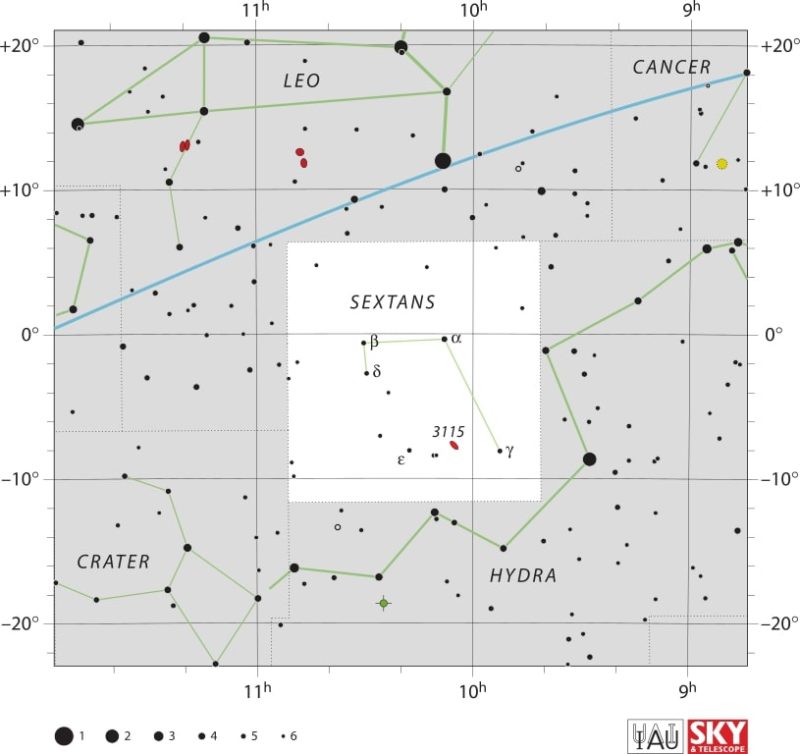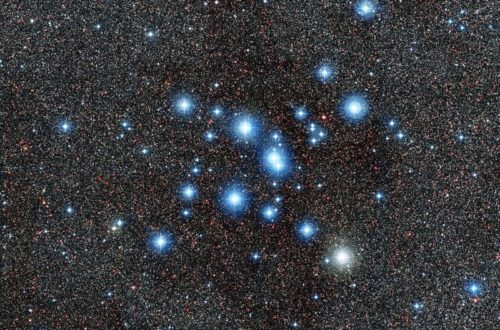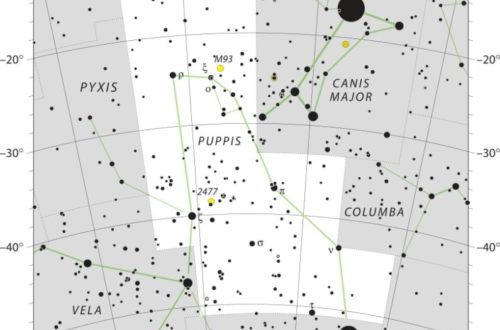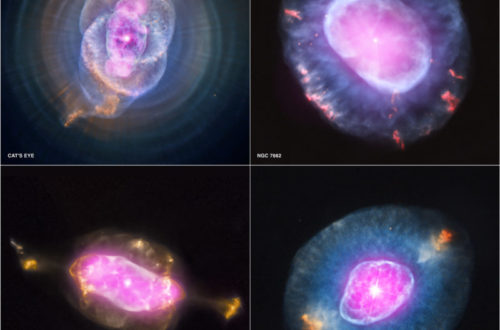Daytime Sextantid Meteor Shower: What to Expect and When to Watch?

The Daytime Sextantids are a fairly week meteor shower. They are active in the daytime and peak on September 27. Meteors from this shower appear to originate from the constellation Sextans, which is most visible in Southern skies.
The shower is characterized by relatively speedy meteors. Although not very intense as some of the other showers, Daytime Sextantids contribute to the annual meteor activity. The next sections will detail how to identify them and what you should look for.
What Are Daytime Sextantids?
The Daytime Sextantids are a unique meteor shower, as the majority of their activity occurs in broad daylight. This will be quite an impressive contrast to the usual meteor showers we observe at night. This shower catches the attention of both amateur and professional astronomers who are always keen to observe them, even under the difficult sun-lit sky.
If you want to catch the Daytime Sextantid meteor shower, it takes some preparation to see them. The sun makes it much harder to see meteors, because it washes out all but the brightest meteors. Nonetheless, their unusual timing provides a rare opportunity to study meteors that are active when a vast majority of people are awake and thus potentially observable. If you’d like to see them, go out on the morning of September 27 close to sunrise. While the sky is still dark, you may see some meteors.
Within the broader study of meteor showers, the Daytime Sextantids provide valuable data on how debris interacts with Earth’s atmosphere, especially during daylight hours.
Defining This Elusive Shower
What makes the Daytime Sextantid meteor shower particularly special is that their peak visibility coincides with daylight hours. Generally, meteor showers are most visible when the sky is dark, but these meteors streak across the sky in broad daylight. The Daytime Sextantids are active from roughly September 9 to October 9, with the shower’s peak occurring near September 27.
Their radiant, or the point in the sky from which meteors appear to originate, is in the constellation of Sextans. As always, the zenithal hourly rate (ZHR) is a measure of how many meteors we would observe if the conditions were perfect. Unfortunately, this rate definition is difficult for this shower. The ZHR is 5 meteors per hour on average, but their meteors tend to get lost in daylight.
Where Do Daytime Sextantids Originate?
Similar to other meteor showers, the Daytime Sextantids happen when our planet travels through a trail of extraterrestrial trash. As with most meteor showers, the debris for this shower was once part of a comet—(155140) 2005 UD. These tiny bits, which are deposited in the comet’s orbital path, disintegrate as they enter the Earth’s atmosphere.
The orbit of the parent comet determines the timing and duration of the meteor shower. Once per year, when Earth’s orbit intersects with this debris stream, the Daytime Sextantids are active.
Understanding the origins of meteor showers can tell us a great deal about the parent bodies’ comets and asteroids. Our study provides a clearer picture of the history and evolution of our solar system.
Unique Traits of Daytime Sextantid Meteors
There are some unique characteristics that make Daytime Sextantids stand out. Visually, Daytime Sextantid meteors are typically dim and swift, due to both their composition and their relatively high speed of 32 km/s. Most disappointingly, their meteors usually can’t be seen by the naked eye unless you’re in ideal conditions.
In fact, the majority of activity is only observed through radar and specialized radio equipment, which has the ability to detect much smaller, dimmer meteors, even in daylight. Researchers are just beginning to chart out patterns of their activity.
How They Differ From Night Showers
Daytime Sextantids are more difficult to see than night meteor showers. The bright light from the sun washes out almost all meteors, leaving only the very brightest to be seen with the naked eye and without special equipment. For observers, the disappointment is real — there’s a notable absence of the dramatic streaks we’re used to seeing under a dark sky.
Daylight further complicates matters by preventing observers from really judging how bright each meteor is. Observers of the Daytime Sextantid meteor shower face a number of unusual challenges. For one, they usually use radio or radar techniques rather than just visual observation.
Why Seeing Them Is Tough
When it comes to viewing the Daytime Sextantids, that’s certainly easier said than done—even for experienced skywatchers. Since the shower is at its peak when the sun is up, the sky will be washed out by sunlight. The radiant, or the point from which the meteors appear to originate, is near the sun.
In this shower, most meteors are very small, just half a millimeter across. It’s this small size that makes them more difficult to see and identify without some specialized equipment. To monitor these, scientists usually require radar technology rather than simply their visual acuity. Even then, most meteors are not caught.
Sun’s Glare: The Biggest Obstacle
Sun’s glare is the biggest obstacle to seeing Daytime Sextantids. The daytime sky is pretty bright, which washes out the dim trails of small meteors. If you search around where the sun is located, your poor eyes receive a barrage of glare that renders it nearly impossible to find anything.
Observers sometimes try to watch when the sun is low, or use filters to cut back the light, but even then, the timing has to be just right.
How Our Atmosphere Interferes
High humidity and/or elevated air pollution can obscure meteors. Light pollution caused by cities contributes a fourth layer of haze. We need clear, dry days in remote places, which provide the optimal conditions, but clear, dry days are few and far between.
The spin of our planet makes the timing even more difficult. As an added challenge, the shower is only visible for a relatively short window of time in the day.
Not Like Other Daytime Events
Viewing the Daytime Sextantid meteor shower will be a very different experience than witnessing a solar eclipse or a daytime comet. Daytime meteor showers are an unusual occurrence and most people will go their entire lives without seeing one.
Their meteors are very brief, obscure, and readily lost against the backdrop of the daytime sky. For astronomers, these showers are special but tough since most of the action is hidden from view or lost among other meteors.
Detecting the Invisible Meteors
Spotting daytime meteors such as the Daytime Sextantids is a challenge. Sunlight washes out most traces, so tracking down these meteors requires some smart equipment and an incredible collaboration.
Instead, professional scientists and amateur meteor watchers employ unique techniques to capture these elusive, invisible plumes.
Radio Astronomy: Your Best Bet
Radio astronomy is unique in its ability to advance daytime meteor detecting. As meteors streak through the atmosphere, they create trails of ionization that reflect and scatter radio waves. These radio signals are detected by surveillance radar systems.
Unlike cameras, radio waves aren’t blocked by sunlight, which means that they can work day or night.
Visual Sighting: A Rare Chance
Actual daytime sightings are few and far between. It requires the perfect combination of a clear blue sky, very bright meteors, and a good deal of luck. When it does, there’s nothing like the thrill.
To increase your chances, go to higher elevations or wide-open fields during peak activity times. So, don’t give up, and don’t despair.
Why Study Hidden Meteor Showers?
Hidden meteor showers, such as the Daytime Sextantids, don’t appear as brilliant flashes through Earth’s atmosphere. They are of great interest to both scientists and skywatchers alike. These hidden showers are an important reminder of all the activity that is happening in our solar system, despite not being readily apparent.
We explore their particulars to reveal the dust storms raging across the universe. Along the way, we uncover the routes that these minuscule meteoroids follow.
Clues About Solar System Dust
Meteor showers, even the stealthier varieties, provide insight into the composition of dust drifting around our solar system. Every fragment of meteoric material tells a story about where it came from.
The Daytime Sextantids introduce some very interesting grains into Earth’s atmosphere. We’re able to learn how this dust evolves as it moves through space by analyzing these grains. Their sizes, shapes and chemical compositions have varied.
This provides scientists with the opportunity to track the evolution of cosmic dust. In doing so, they can begin to link it to bigger stories of how planets came together. For that reason, researchers pay special attention to these showers. This informs their search for clues about how dust has created the solar system we see today.
Advancing Meteor Science Knowledge
Exploring hidden meteor showers leads to the greater advancement of meteor science. Scientists collaborate to observe, follow, and interpret these occurrences, while exchanging information and perspectives.
This collaborative approach translates into exceptional outcomes and groundbreaking discoveries. Data gathered from hidden showers allows us to develop and improve meteor tracking techniques and refine our predictions regarding meteoroid impacts.
Citizen science projects, where everyday people pitch in to monitor the skies, take this work to an exciting new level.
The Thrill of Scientific Discovery
There’s a tangible thrill in discovering something unseen—even if it’s tiny, elusive, and tough to spot. Amateur astronomers have made tangible contributions to this work, often discovering new meteor streams or unexpected patterns that had eluded even the largest observatories.
Their findings contribute to our understanding, proving that even the least expected can help move science forward. There’s an undeniable magic and allure to meteor watching, combining wonder, patience, and adventurous spirit.
Conclusion
The Daytime Sextantids don’t get much love from most people. These meteors are very dim and they streak in the daytime sky, therefore the sun makes them all but impossible to spot with the unaided eye. Few humans ever see them, but their weak signals can be detected with radio equipment.
You’ll need a good measure of luck and a better than average setup to succeed. Even if you never see one, these meteors still tell us a lot about our skies and space rocks in our neighborhood.
Frequently Asked Questions
What is the Daytime Sextantid meteor shower?
The Daytime Sextantids are a unique meteor shower that occurs annually in late September and early October. Their peak period is on September 27.
Why can’t we see the Daytime Sextantids with our eyes?
These meteors peak in daylight hours, which would cause them to be invisible to the naked eye. Unfortunately, the bright summer sun completely washes out even the brightest meteors.
How do scientists detect Daytime Sextantids?
The meteors are detected using radio and radar systems by researchers. These techniques detect the trails of ionized gas created by the meteors as they disintegrate in Earth’s atmosphere.
See also:
- Previous meteor shower: Chi Cygnid Meteor Shower
- Next meteor shower: October Camelopardalid Meteor Shower
Would you like to receive similar articles by email?





